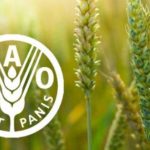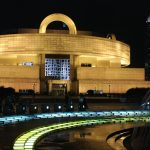Foundation of the International Institute of Traditional Knowledge
Living in a house built or restored with traditional mortars instead of cement and synthetic products, dim the greenhouse gas emissions and the modern electricity bill. Growing arid areas using irrigation a network of horizontal tunnels, as it did in the Sahara or China oases, avoids waste of 300 cubic feet of water per hectare per day and cuts 13 tonnes of carbon dioxide per year on the Same hectare of fields. Protecting the soil from landslides with stone terraces instead of concrete dams, which often become one of the causes of floods and landslides, saves our country from 10 to 20 tons of CO2 per year. It puts our slopes in safety.
These are the traditional techniques. Tanks collecting rain; Green roofs that replace air conditioners; Houses with walls that not only capture water but return it purified. Technologies that are disappearing and can become essential to respond to the global environmental and economic crisis and improve the quality of life. To open the large archive of millions of ancient and highly-known knowledge, the Institute for Traditional Knowledge, a large Bank of the Earth, is now being created, making it available to governments, public administrations and technical citizens who would lose without an active Conservation and enhancement.
This is what emerges during the presentation of the International Traditional Knowledge Institute (ITKI), the organization wanted by UNESCO to gather hundreds of thousands of ancient and current solutions to desertification, lack of water, landslides, and energy waste. An innovative choice for the organization of the United Nations, which is presented today in Florence at a press conference attended by the subjects that have created the Institute: Pietro Laureano, UNESCO consultant and president of Ipogea; Luciano Bartolini, mayor of Bagni a Ripoli, where the center will rise; The Assessor of the Environment of the Province of Florence Renzo Crescioli; The director of Nobrega Foundation Michael Carrington; President of the Romualdo Del Bianco Foundation, Paolo Del Bianco; The President of the Water Right Foundation, Mauro Perini and a large delegation of mayors and directors of the area: Fabio Incatastato (Fiesole), Marco Mairaghi (Pontassieve), Paolo Santini (Councilor of the Municipality of Vinci).
“To preserve a suitable environment for human life, protecting the monuments is not enough anymore. Now we go to the conservation and enhancement of knowledge, an immaterial and precious asset that is one of the cornerstones to start the third industrial revolution of green economy, based on alternative energies, zero emissions, slow economy and creative industries, “says Pietro Laureano , Who worked as a UNESCO consultant on environmental restoration of the Sahara oasis and was the protagonist in the recovery of the Sassi of Matera, the first formidable European example of reuse of traditional knowledge and techniques for a contemporary project. “Traditional knowledge and innovative use are the basis for a sustainable technology that is essential for the development of a new model of human progress.”
These techniques, explained in a video link from Paris, UNESCO Deputy General Manager Francesco Bandarin, “are a potential field that is being lost, with the emergence of cement monoculture and also with the displacement of populations. It happened in Italy in the 1950s, is happening in China where every year 10 million people leave the villages to concentrate in urban areas. ”
The traditional techniques present on the planet are tens of millions with varieties corresponding to environmental and cultural diversity. The Institute works on a basis of 700 great “families” of techniques that have been classified and identified. The database, which will become a real Bank of the Earth, and communication action to governments, public administrations, businesses and citizens will spread them as sustainable and innovative practices in agriculture, architecture and urban areas, landscape and social practices. Their use makes considerable economic savings in all sectors and in particular in CO2 emissions (see also attached dossier).
“The institute that is born under the aegis of Unesco will be the accelerator of a change whose signals are already seen. The Municipality of Bagno a Ripoli is proud not only to host the center but also to participate actively in its realization, together with the Province of Florence (?), The Nobrega Foundation and the Romualdo Del Bianco Foundation, “said the mayor Of Bagno a Ripoli Luciano Bartolini. “Tuscany is an example of how it is possible to link development with landscape conservation, while maintaining its traditional characteristics.”








